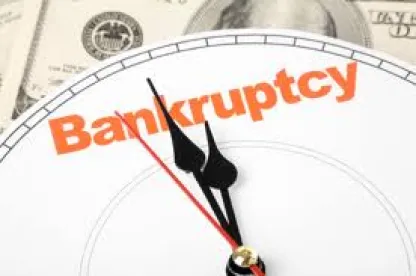The United States Supreme Court recently decided a case that impacts lenders and other creditors in Chapter 11 bankruptcy proceedings. The Supreme Court held that a bankruptcy court may not approve a “structured dismissal” of a Chapter 11 case if it violates the priority scheme in the Bankruptcy Code. The ruling protects creditors against debtor-creditor alliances in bankruptcy that would attempt to deny them the distribution to which they are entitled under the Code.
A business may file for bankruptcy under Chapter 7 or Chapter 11. In Chapter 7, a trustee liquidates the debtor’s assets and distributes the proceeds to the creditors. In Chapter 11, the debtor and creditors try to negotiate a plan that permits the company to continue operations. If a plan is not confirmed—either by consent or after a contested hearing—the bankruptcy court may convert the case to Chapter 7 or dismiss it.
If the bankruptcy court dismisses a case, the court endeavors to return the parties to the pre-bankruptcy status quo. But under certain circumstances, a bankruptcy court may approve so-called “structured dismissals,” which provide agreed-upon distributions and releases.
Bankruptcy law aims for “fair and equitable” treatment of creditors. A cardinal principle is that the claims of junior creditors cannot be satisfied until the claims of more senior creditors are paid in full, absent the senior creditors’ consent. The Code also provides special protection for certain priority claims (e.g., wages, employee benefits, consumer deposits and taxes). The Bankruptcy Code essentially requires that, absent consent, a senior class must be paid in full before junior classes of creditors and equity holders can receive any money or property under a Chapter 11 plan. This is called the “absolute priority rule.”
In Czyzewski v. Jevic Holding Corp., the Supreme Court held that, in approving a structured dismissal, a bankruptcy court may not approve distributions to lower-priority claimants without the consent of the affected, higher-priority creditors. In a 6-2 decision, the Supreme Court emphasized the fundamental nature of the Bankruptcy Code’s priority system.
In Jevic, the debtor and a group of creditors negotiated a “structured dismissal” that sought to exclude a group of truck drivers from the distribution of assets. The truck drivers held claims against the debtor under the WARN Act (a federal labor law). The proposed settlement would have made payments to certain unsecured creditors, but none to the truck drivers. The problem was that the truck drivers’ claims were higher in priority than some of the unsecured claims.
The lower courts approved the structured dismissal, but the Supreme Court reversed. The Supreme Court held that bankruptcy courts may not approve structured dismissals that provide for distributions that violate the Code’s priority rules without the consent of the affected creditors. The takeaway is that the absolute priority rule governs all orders that end a bankruptcy case, whether by Chapter 7 liquidation, Chapter 11 plan confirmation, or settlement and structured dismissal. Distribution plans incorporated in such orders must comply with the Code’s priority scheme. Otherwise, the bankruptcy court must reject them. Lenders and other creditors need to be aware of this decision. Depending on where they sit in the priority scheme and their objectives in the bankruptcy, Jevic may protect them or limit their ability to craft structured dismissals.




 />i
/>i
